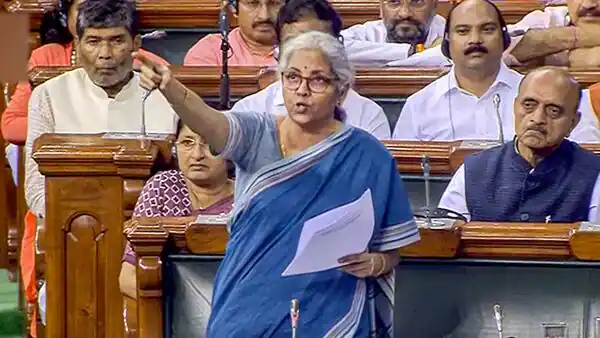What is a White Paper in Economics? Types and Main Purpose (Indian Express)

- 09 Feb 2024
Why is it in the News?
Finance Minister Nirmala Sitharaman presented a “white paper” on the Indian economy in Parliament recently.
What is a White Paper?
- A White Paper is a report, guide, research-based paper or formal government document that presents expert analysis about a topic or solution to a problem, or policy proposals, often bound in white covers.
- They have been used historically to introduce new policies or legislation and gauge public reaction to government initiatives, schemes or policies.
Types of White Paper:
- There are three types of white paper Economic White Paper, Budget White Paper, and Policy White Paper.
- Economic White Paper: It contains an analysis of the current state of the economy and talks about the challenges, and opportunities it faces.
- The paper also contains the government’s plans and strategies to address the issues.
- Budget White Paper: A Budget White Paper contains government budgetary priorities, spending schemes, revenue sources, and fiscal projections among other issues.
- Policy White Paper: A Policy White Paper talks about a specific policy, scheme or program of the government to address a particular issue or problem in the economy.
- Economic White Paper: It contains an analysis of the current state of the economy and talks about the challenges, and opportunities it faces.
What is the use of White Paper?
- The purpose of a white paper on the economy is to inform the public, Parliament, and stakeholders about a government's policy, vision, goals, plans, and actions being taken to safeguard the economic interests of the country.
- The document can also be used as a tool for consultation and feedback, as it invites comments and suggestions from various parties on the proposed policies or programs.
- A white paper can also influence public opinion and shape the political debate on economic issues.
Key Insights from the White Paper on the Indian Economy and its Objectives:
- The comprehensive 58-page document is structured into three primary segments.
- Section 1 delves into the macroeconomic landscape during the UPA's 10-year tenure.
- Section 2 presents an overview of various corruption scandals that occurred under the UPA administration.
- Section 3 outlines the strategies employed by the NDA to revitalize the economy.
Objectives of the white paper presented by FM:
- To elucidate the governance, economic, and fiscal challenges inherited by the NDA government upon assuming office in 2014.
- To shed light on the policies and initiatives undertaken by the NDA government since 2014 to rejuvenate the economy.
- To stimulate a more informed discourse on the significance of national interest and fiscal responsibility in governance, transcending political expediency.
Most Important Claims in the White Paper:
- The UPA era was marred by policy missteps and corruption scandals, notably non-transparent auctions of public resources like coal and telecom spectrum.
- In the aftermath of the 2008 Global Financial Crisis, the UPA's pursuit of high economic growth undermined macroeconomic stability, leading to challenges such as high inflation and fiscal deficit.
- Capital expenditure as a percentage of total expenditure declined significantly during the UPA tenure, impeding infrastructure development and economic growth.
- The White Paper highlights improvements under the NDA, including lower inflation rates and enhanced efficacy of schemes like Jan Dhan and Swachh Bharat Mission.
- The NDA government's proactive measures have steered the economy away from crisis, positioning India as one of the top global contributors to growth.
- Overall, the White Paper underscores the NDA's efforts to address economic challenges and foster sustainable growth in India.
What Insights Can We Draw from the Above Assertions?
- Examining the economic performance spanning two decades, especially in consecutive terms, presents a formidable challenge due to the multitude of factors influencing both the economy and its measurement methodologies.
- For example, the significant fluctuations in domestic inflation during the latter years of the UPA administration can largely be attributed to the volatile cost of crude oil.
- During FY12 to FY14, crude oil prices fluctuated between $111 and $105 per barrel, significantly impacting inflation rates. Subsequently, oil prices declined to $84 in FY15 and further to $46 in FY16.
- While the NDA government has achieved noteworthy milestones such as the implementation of GST and IBC, the white paper fails to acknowledge shortcomings within the economy.
- Notably, it overlooks critical issues such as unemployment, and the absence of a formal measure of poverty since 2011 is not addressed.
